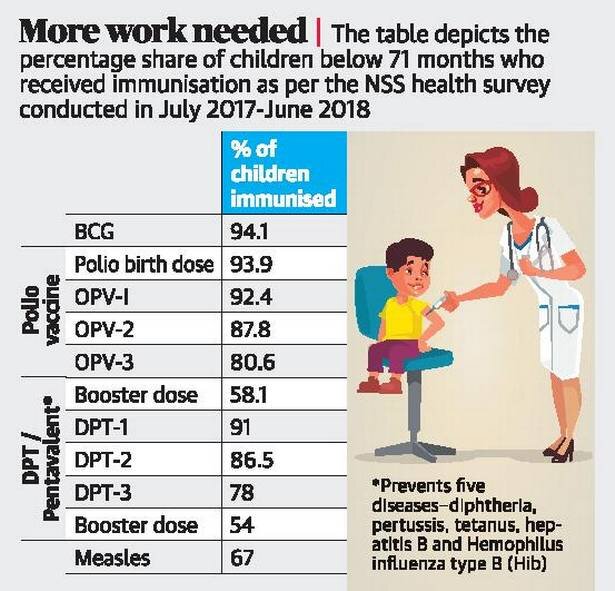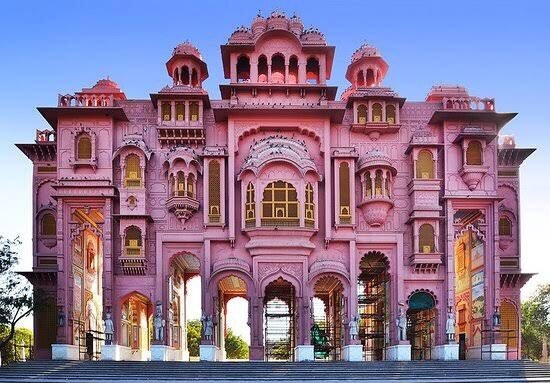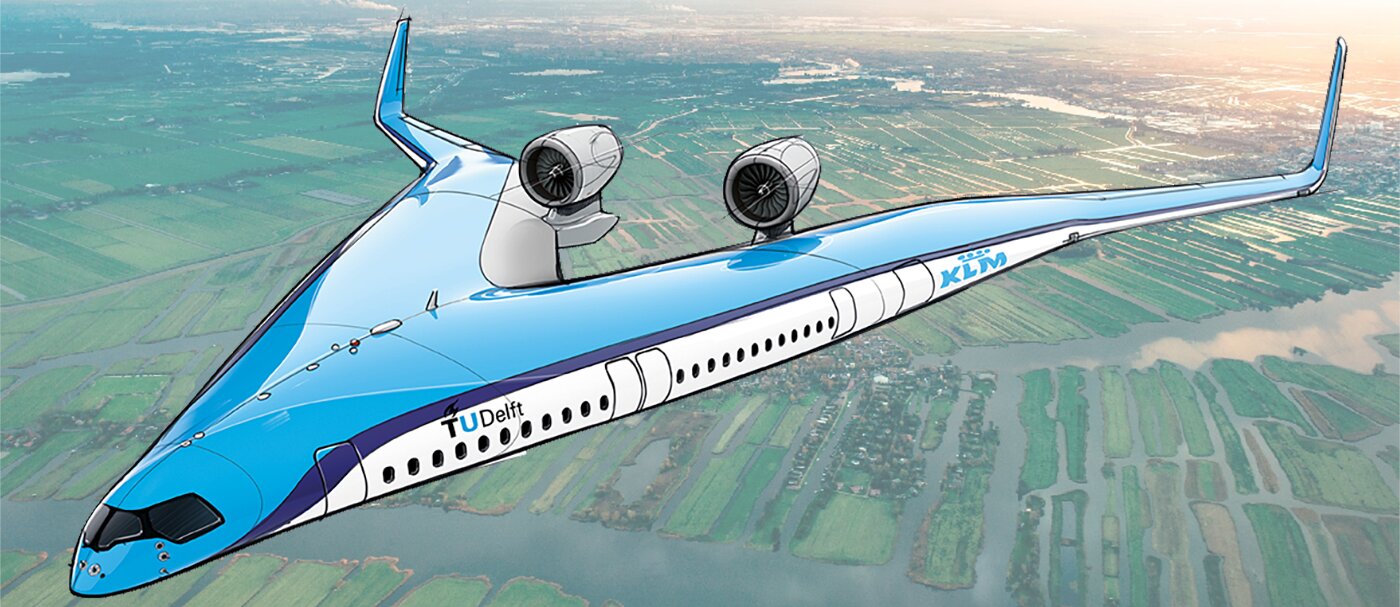National Statistical Organisation Survey on Digital Education Divide
Why in News
A recent report on the latest National Statistical Organisation (NSO) survey shows the stark digital divide across States, cities and villages, and income groups.
- The survey on household social consumption related to education is part of the NSO’s 75th round of Sample Survey.
- Schools across the country are closed for six months due to Covid-19. This means vastly different things for different people like many who have access to digital resources are getting online education, those who do not have such resources are devoid of education.
Key Points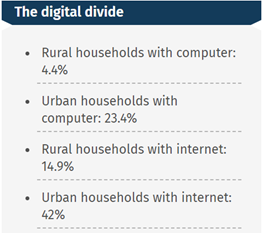
- Access to Computers and Internet:
- Across India, only one in ten households have a computer — whether a desktop, laptop or tablet.
- Almost 25% of all homes have Internet facilities, accessed via a fixed or mobile network using any device, including smartphones.
- Urban-Rural Divide:
- Most of the Internet-enabled homes are located in cities, where 42% have Internet access. In rural India, however, only 15% are connected to the internet.
- Access and Utilization Gap:
- Of course, having Internet access is no guarantee that one can use it.
- 20% of Indians above the age of 5 years had basic digital literacy,
- Just 40% in the critical age group of 15 to 29 years, which includes all high school and college students as well as young parents responsible for teaching younger children.
- Regional Disparity:
- The national capital has the highest Internet access, with 55% of homes having such facilities.
- Himachal Pradesh and Kerala are the only other States where more than half of all households have Internet.
- Odisha is at the bottom with only one in ten homes having Internet.
- There is less than 20% Internet penetration, even in States with software hubs such as Karnataka and Tamil Nadu.
- Disparity due to Economic status:
- The biggest divide is by economic status, which the NSO marks by dividing the population into five equal groups, or quintiles, based on their usual monthly per capita expenditure.
- Even in Odisha, almost 63% of homes in the top urban quintile have Internet facilities.
- In the poorest quintile of rural Odisha, however, that figure drops to an abysmal 2.4%.
- Intra-state Inequality:
- Kerala shows the least inequality with more than 39% of the poorest rural homes having Internet, in comparison to 67% of the richest urban homes.
- Himachal Pradesh also fares well, with 40% of the lowest rural quintile having Internet.
- Assam shows the starkest inequality, with almost 80% of the richest urban homes having the Internet access denied to 94% of those in the poorest rural homes in the State.
Government Initiatives
- The Centre has directed State Education Departments to map the online access available to all their students in order to adequately plan curriculum and teaching methods that can reach such students.
- New Education Policy: National Education Policy, 2020 aims at making “India a global knowledge superpower” by introducing several changes from the school to college level in the Indian education system with special emphasis on digital education.
- DIKSHA (Digital Infrastructure for Knowledge Sharing) platform- DIKSHA is the national platform for school education available for all states and the central government for grades 1 to 12 and was launched in September 2017.
- As part of PM eVidya announced under the Atmanirbhar Bharat programme, DIKSHA is the ‘one nation; one digital platform’ for school education in India.
- Swayam Prabha TV Channel- To support and reach those who do not have access to the internet.
- Online MOOC courses- Online Massive Open Online Course MOOC courses relating to NIOS (grades 9 to 12 of open schooling) are uploaded on SWAYAM portal; around 92 courses have started and 1.5 crore students are enrolled.
- On Air – Shiksha Vani, DAISY by NIOS for differently-abled, e-PathShala- Radio broadcasting is being used for children in remote areas who are not online (especially for grades 1 to 5).
Solutions
- Online education as a common good: The Centre and the state governments should start making access to technology universal and more feasible in the public education system.
- Also, as part of Corporate Social Responsibility, private players can involve tech-based organisations to make e-resources accessible and available to students, especially in government and low-income private schools.
- Expansion in the scope of Right to Education: The definition of the right to education needs to expand and promote online education so that it addresses the importance of connectivity and access to knowledge and information.
- Valuing teaching profession: Digital innovation provides a remarkable opportunity for the democratisation of education.
- However, there is a need to encourage conditions that give frontline educators autonomy and flexibility to act collaboratively.
- e-Skilling: Inclusion of virtual vocational training, virtual labs & skill development courses.
- Vernacular language: Developing quality e-content in local languages.
Way Forward
- To begin with, we need to promote and ensure digital literacy among the masses, primarily uninterrupted Internet connectivity and mobile network signals in rural areas.
- The implications of school closures in the country are not just about education; they are manifold. An unprecedented social disaster can be avoided if more entities - Government and private - pitch into short-term and long-term futures of the children in this digital divide.
Gap in Vaccination of Children
Why in News
According to the ‘Health in India’ report recently published by the National Statistical Organisation (NSO), the full immunisation programme is not completed among 40% of the children.
- The report is based on the 75th round of the National Sample Survey (July 2017-June 2018) on household social consumption related to health.
Full Immunisation
- It means that a child receives a cocktail of eight vaccine doses in the first year of life. This includes:
- BCG Vaccine: It is injected in a single dose shortly after birth, which protects against a childhood attack of tuberculosis.
- Measles Vaccine: Measles is a viral disease.
- Oral Polio Vaccine (OPV): It is given against polio virus. Its first dose is given at birth, followed by two more doses at intervals of four weeks.
- DPT/Pentavalent Vaccine: It is injected in three doses, which is meant to protect a child from diphtheria, pertussis or whooping cough, tetanus, Hepatitis B, and meningitis and pneumonia caused by haemophilus influenzae type B.
- Booster doses for OPV and DPT are also given between 16 and 24 months.
Key Points
- Data Analysis:
- Across the country, only 59.2% of children under five years are fully immunised.
- About 97% of children across the country received at least one vaccination — mostly BCG or the first dose of OPV at birth.
- Only 67% of children are protected against measles. Only 58% got their polio booster dose, while 54% got their DPT booster dose.
- States/UTs Specific Data:
- Best Performance: Manipur (75%), Andhra Pradesh (73.6%) and Mizoram (73.4%) recorded the highest rates of full immunisation.
- Poor Performance: Nagaland (12%), followed by Puducherry (34%) and Tripura (39.6%).
- In Delhi, less than half of all children are fully immunised.
- Issues Involved:
- The Covid-19 pandemic has already impacted the childhood vaccination programme.
- According to advocacy group Child Rights and You reports, only half of Indian families with children under five years were able to access immunisation services during the lockdown.
Way Forward
- Immunisation is a simple and effective way of protecting children from serious diseases. It not only helps protect individuals, it also protects the broader community by minimising the spread of disease. Therefore the government needs to remove any gap in immunisation.
World Solar Technology Summit
Why in News
Recently, the first-ever World Solar Technology Summit (WSTS) was organised by the International Solar Alliance (ISA) and Federation of Indian Chambers of Commerce and Industry (FICCI).
Key Points
- Objectives:
- To showcase to member countries the state of the art and next-generation solar technologies worldwide.
- To give an opportunity to decision-makers and stakeholders to meet, and discuss their own priorities and strategic agenda towards a larger integration.
- To discuss the recent highlights of solar technologies, cost-wise, technology-wise, technology transfers, challenges and concerns in the field.
- Steps Taken by India:
- In spite of having one of the lowest per-capita carbon emissions in the world, India has pressed ahead with the deployment of renewable energy at a fast pace for lowering carbon footprints.
- India has enhanced its installed renewable capacity by 2.5 times and increased the solar installed capacity by more than 13 times.
- Globally, India ranks 4th in terms of renewable power.
- India has scaled non-fossil fuel-based power generations to 134GW, which is about 35% of the total power generation and it is expected to increase it to 220 GW by 2022.
- India is providing capacity-building support to ISA member countries through its Indian Technical and Economic Cooperation (ITEC) Programme.
- Project Preparation Facility has been set up to develop bankable Solar Energy projects in ISA member countries with the help of Export-Import (EXIM) Bank of India.
- In 2018, India announced about USD 1.4 billion worth of lines of credit (LOCs) for covering 27 solar projects across 15 countries. These projects are in various stages of implementation.
- In spite of having one of the lowest per-capita carbon emissions in the world, India has pressed ahead with the deployment of renewable energy at a fast pace for lowering carbon footprints.
- Solar Energy related Schemes:
- Solar energy has taken a central place in India's National Action Plan on Climate Change with the National Solar Mission as one of the key Missions.
- National Solar Mission (NSM) was launched on 11th January 2010 and is in line with India’s Intended Nationally Determined Contributions (INDCs).
- Its objective is to establish India as a global leader in solar energy by creating the policy conditions for solar technology diffusion across the country as quickly as possible.
- One Sun, One World, One Grid (OSOWOG): India’s ambitious cross-border power grid plan which seeks to transfer solar power generated in one region to feed the electricity demands of others.
- KUSUM Scheme: It aims to replace the use of diesel in the farm sector with solar energy with the target of solarisation of 2.8 million irrigation pumps.
- Solar Charkha Mission: It is an enterprise driven scheme and envisages setting up of ‘Solar Charkha Clusters’ which will have 200 to 2042 beneficiaries. These solar charkhas are operated using solar power, keeping the environment clean and generating sustainable employment for the artisans.
- 750 megawatt (MW) solar project which has been inaugurated in Rewa, Madhya Pradesh.
- Solar energy has taken a central place in India's National Action Plan on Climate Change with the National Solar Mission as one of the key Missions.
International Solar Alliance
- It is a treaty-based international intergovernmental organisation which was jointly launched by India and France on 30th November 2015 during the 21st session of the United Nations Climate Change Conference of the Parties (COP-21) in Paris, France.
- It was conceived as a coalition of solar-resource-rich countries (which lie either completely or partly between the Tropic of Cancer and the Tropic of Capricorn) to address their special energy needs.
- Aim: To lower the cost of technology and finance and thereby facilitate deployment of over 1,000 GW of solar energy and mobilize more than USD 1,000 billion into solar power by 2030 in member countries.
- Solar energy is a key source of affordable and reliable energy, thus it could play a significant role in achieving the universal energy access goal (SDG 7).
- Headquarter: Gurugram in Haryana, India.
- As of June 2020, the ISA Framework Agreement has been signed by 86 countries, with 68 having also deposited instruments of ratification.
Launch of Bamboo Clusters
Why in News
Recently, the Union Minister for Agriculture and Farmers’ Welfare has virtually inaugurated 22 bamboo clusters in 9 states viz. Gujarat, Madhya Pradesh, Maharashtra, Odisha, Assam, Nagaland, Tripura, Uttarakhand and Karnataka.
- A logo for the National Bamboo Mission (NBM) has also been released.
Key Points
- Initiatives to Promote Bamboo:
- Use of bamboo has been an ancient tradition in India and it is now being supported with modern technology and the youth is being provided with training for the bamboo industry.
- The Indian Forest Act 1927 was amended in 2017 to remove bamboo for the category of trees.
- As a result, anyone can undertake cultivation and business in bamboo and its products without the need of a felling and transit permission.
- Import policy has also been modified to ensure the progress of the bamboo industry in the country.
- NBM supports local artisans through locally grown bamboo species, which will actualise the goal of Vocal for Local and help increase the income of farmers, reducing dependency on imports of raw material.
- 10 most important species which are required by industry have been identified and quality planting material is being made available to farmers for plantations.
- Apart from the existing Farmer Producer Organisations (FPOs), 10,000 new FPOs will be formed in 5 years.
- Well-organized FPOs engage in providing a range of assistance to farmers like imparting better farm practices, collectivisation of input purchases, transportation, linkage with markets, and better price realisation as they do away with the intermediaries.
- Common Facility Centres are being set up close to the plantations which will reduce the cost of transportation and increase local entrepreneurship, moving to a zero-waste approach.
- National Bamboo Mission:
- The restructured NBM was launched in 2018-19 for the holistic development of the complete value chain of the bamboo sector and is being implemented in a hub (industry) and spoke model.
- Objective:
- Connecting farmers to markets so as to enable farmer producers to get a ready market for the bamboo grown and to increase the supply of appropriate raw material to the domestic industry.
- It also endeavours to upgrade skills of traditional bamboo craftsmen as per the requirement of contemporary markets with a tie-up with enterprises and premier institutes.
- The Sector Skill Councils established under the National Skill Development Agency (NSDA) will impart skills and recognition of prior learning to traditional artisans, encouraging the youth to carry forward their family traditions.
- NSDA is an autonomous body under the Ministry of Skill Development and Entrepreneurship that anchors the National Skill Qualifications Framework and allied quality assurance mechanisms for synergizing skill initiatives in the country.
- New Logo:

- It portrays a bamboo culm in the centre of a circle composed of half an industrial wheel and half farmers, depicting the objectives of NBM appropriately.
- The green and yellow colour of the logo symbolise bamboo often termed as green gold.
Way Forward
- States need to take forward the objectives of the National Bamboo Mission which would contribute to the Aatmanirbhar Bharat Abhiyan through an “Aatmanirbhar Krishi (self-reliant farming)”.
- With the abundance of bamboo and its rapidly growing industry, India should aim to establish herself in global markets for both engineered and handcrafted products by increasing the exports even further.
Sanskrit Grams Programme: Uttarakhand
Why in News
The Uttarakhand Government has decided to develop 'Sanskrit Grams' across the state.
- The decision was taken after noting significant progress in a pilot programme to teach Sanskrit to residents of two villages in Uttarakhand.
Key Points
- Sanskrit Grams Programme:
- Aim: To teach people to use Sanskrit regularly.
- Villages Selected:
- Several villages were selected according to the availability of Sanskrit schools so that teachers may visit the villages often and motivate residents to learn and use Sanskrit.
- Villages were selected at the meeting of the Uttarakhand Sanskrit Academy, chaired by the Uttarakhand Chief Minister.
- It has also been decided to rename the academy as Uttaranchal Sanskrit Sansthanam Haridwar, Uttarakhand.
- The academy was established in 2002.
- Implementation Strategy:
- The focus will be on the school-going children so that they can learn the language from a young age.
- The programme will start by teaching people smaller sentences which are used most commonly.
- The programme will run first at the district level and then at the block level for promotion of the Sanskrit language.
- About the Pilot Programme:
- Earlier, villages of Kimotha in Chamoli district and Bhantola in Bageshwar district were developed as Sanskrit villages.
- Residents have started using the language in their daily communication and they also sing folk songs in Sanskrit.
- Usage of Sanskrit in Uttarakhand:
- Sanskrit is the second official language in Uttarakhand after Hindi (Article 345 of the Constitution: Official language or languages of a State).
- The state government currently runs 97 Sanskrit schools, where an average of 2,100 students study each year.
Sanskrit
- It is an old Indo-Aryan language in which the most ancient documents, Vedas are composed in what is called Vedic Sanskrit.
- Classical Sanskrit, a language close to late Vedic as then used in the northwest of the subcontinent, was elegantly described in one of the finest grammars ever produced, the Aṣṭādhyāyī (“Eight Chapters”) composed by Pāṇini (c. 6th–5th century BCE).
- Sanskrit has been written both in Devanāgarī script and in various regional scripts, such as Śāradā from the north (Kashmir), Bāṅglā (Bengali) in the east, Gujarātī in the west, and various southern scripts, including the Grantha alphabet, which was especially devised for Sanskrit texts.
- There are also major works of drama and poetry, although the exact dates of many of these works and their creators have not been definitively established. Important authors and works include:
- Bhāsa (for example, his Svapnavāsvavadatta - Vāsavadatta in a Dream), who is assigned widely varying dates but definitely worked prior to Kālidāsa, who mentions him.
- Kālidāsa, dated anywhere from the 1st century BCE to the 4th century CE, whose works include Śakuntalā, Vikramorvaśīya, Kumārasambhava and Raghuvaṃśa.
- Śūdraka and his Mṛcchakatika (“Little Clay Cart”), possibly dating to the 3rd century CE.
- Bhāravi and his Kirātārjunīya (“Arjuna and the Kirāta”), from approximately the 7th century.
- Māgha, whose Śiśupālavadha (“The Slaying of Śiśupāla”) dates to the late 7th century.
- The two epics Rāmāyaṇa (“Life of Rāma”) and Mahābhārata (“Great Tale of the Bhāratas”) were also composed in Sanskrit, and the former is esteemed as the first poetic work (ādikāvya) of India.
- Sanskrit is a classical and an eighth schedule language.
Promotion of Sanskrit by the Central Government
- The government has established the Rashtriya Sanskrit Sansthan in Delhi as a nodal authority to promote Sanskrit. The Sansthan has been allocated Rs 643.84 crore in the last three years.
- Providing financial assistance to Adarsh Sanskrit Mahavidyalayas/Shodha Sansthans.
- Award of merit scholarships to students of Sanskrit Pathasala to College level.
- Financial assistance to NGOs/Higher Educational Institutions of Sanskrit for various Research Projects/Programmes.
- Retired eminent Sanskrit scholars are engaged under the Shastra Chudamani scheme for teaching.
- Sanskrit is also taught through Non-formal Sanskrit Education (NFSE) programme, by setting up Non-Formal Sanskrit learning centres, in reputed institutions like Indian Institutes Technology, Ayurveda institutions, Modern Colleges and Universities.
- Presidential awards for Sanskrit Language are awarded annually to 16 senior scholars and to 5 young scholars.
- Financial Assistance for Publication, Reprint of rare Sanskrit books.
- Ashtaadashi containing eighteen Projects for sustaining the growth of Sanskrit has been implemented.
Delhi Master Plan 2041
Why in News
Recently, the Delhi Development Authority (DDA) has decided to hold public consultations for the preparation of the Master Plan for Delhi 2041, a vision document for Delhi's development over the next two decades.
- The DDA, in partnership with the National Institute of Urban Affairs (NIUA), is currently preparing the Master Plan for Delhi 2041.
- The existing Master Plan for Delhi, which lays down planning guidelines, policies, code of development, and space requirements for various socio-economic activities will come to end in 2021.
Key Points
- Features of 2041 Master Plan:
- This Master Plan focuses on sustainability, inclusivity and equity.
- It endeavours to be proactive and forward-looking in nature that accounts for current, emerging and anticipated drivers of urban development.
- Area of Focus:
- A blue-green infrastructure, cycling infrastructure, walking circuits for pedestrians, and focus on unauthorised colonies to make it less dense.
- There is also a plan to develop spaces for yoga, active sports, open air exhibitions, museums and information centres, and other low impact public uses.
- The Master Plan will be able fulfill various provisions of Sustainable Development Goals (SDGs) like:
- SDG 6- Clean water and sanitation.
- SDG 11- Sustainable cities and communities.
- SDG 14- Life below water.
- SDG 15- Life on land.
Blue-Green Infra Policy
- It refers to urban planning where water bodies and land are interdependent, and grow with the help of each other while offering environmental and social benefits.
- ‘Blue’ infrastructure refers to water bodies like rivers, canals, ponds, wetlands, floodplains, and water treatment facilities.
- ‘Green’ stands for trees, lawns, hedgerows, parks, fields, and forests.
- Working:
- Delhi has around 50 big drains (blue areas) but due to their poor condition and encroachment, the land around green areas has also been affected. In the recent past severe air pollution has also affected the city.
- The master plan focuses on removal of all sources of pollution by checking the outfall of untreated wastewater as well as removal of existing pollutants.
- As per report by the Central Pollution Control Board, Delhi generates 3,800 million litres of sewage per day and half of this goes directly into water bodies without being treated.
- A mix of mechanised and natural systems may be adopted, and dumping of solid wastes in any of these sites will be strictly prohibited by local bodies, through the imposition of penalties.
- Issues Involved:
- Lack of access to basic services of water and sanitation and other facilities.
- Other issues included legality of some of the properties, narrow access roads, congestion, conflicts between commercial and residential uses, quality of drinking water and water logging.
- Vulnerability and risks related to disasters such as fire, earthquakes, etc.
- Lack of coordination between multiplicity of agencies like DDA, Delhi Jal Board, Flood and Irrigation Department, and various municipal corporations.
Way Forward
- The challenge of multiplicity of agencies needs to be dealt with by the government. This will increase coordination and cooperation among these agencies.
- There must be a strict adherence to plans for cleaning of water bodies and drains which has been a challenge for agencies in Delhi for years. Dumping of waste in the Yamuna river also needs to be strictly regulated.
Rogan Art: Gujarat
Why in News
The centuries old tradition of Rogan art (hand painting on cloth), is facing an unprecedented challenge due to pandemic.
Key Points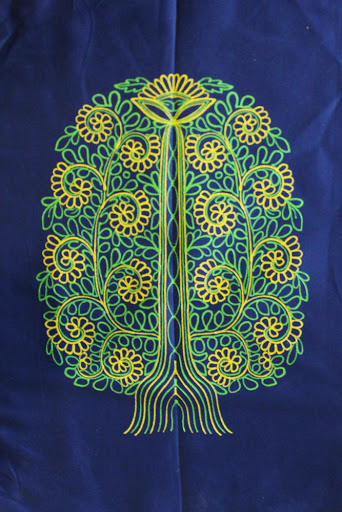
- About:
- The word Rogan means “Oil” in Persian. With origins in Persia, it came to Kutch around 300 years ago.
- This rare craft is practised by a lone Muslim family, the Khatris of Nirona Village, Gujarat.
- Technique:
- Rogan is a form of textile painting which uses a rich, brightly coloured paint made from castor oil and natural colors. Castor is a crop commonly grown in the Kutch region of Gujarat and the artists source it from the local farmers.
- Patterns:
- The intricate motifs – geometric flowers, peacocks, the tree of life, etc. – are drawn from the history and folk culture of the Kutch region.
- Process:
- The castor paste is mixed with natural colours and then is drawn out into a fine ‘thread’ with a metal stylus or ‘Kalam’. This metal rod never comes in contact with the fabric.
- The artisans then carefully twist the paint across the cloth into motifs and patterns.
- Next, the fabric is folded thereby printing its mirror image. The finer details are then added thus completing the Rogan painting.
- Recognition:
- The ‘Tree of Life’ design is the most famous design in Rogan painting. It is inspired by traditional Persian designs. The Prime Minister of India, Narendra Modi, gifted Rogan paintings to the USA president, Barack Obama, during his visit to the USA in 2014.
- The nine artists from the Khatri family have six national awards and six State awards between them.
- Other Important Painting Styles of India:
- Kangra Miniature Painting (Himachal Pradesh)
- Pattachitra Painting (Odisha)
- Thanjavur Painting (Tamil Nadu)
- Kishangarh school of Painting (Rajasthan): The well-known painting "Bani Thani" belongs to this style of painting.
- Kalamkari Painting (Andhra Pradesh)
- Madhubani Painting (Bihar)
- Warli Painting (Maharashtra)
Real Mango: An Illegal Software
Why in News
In a nationwide investigation, Railway Protection Force (RPF) has disrupted the operation of illegal software called “Real Mango” - used for cornering confirmed Railway reservation.
Key Points
- About: Real Mango software is an illegal software developed for booking Tatkal tickets.
- Working:
- Real mango software bypasses captcha.
- It synchronises bank OTP with help of a mobile app and feeds it to the requisite form automatically.
- The software auto-fills the passenger details and payment details in the forms.
- The software logs in to the IRCTC website through multiple IRCTC Ids.
- Following these steps multiple tickets can be booked. And it leads to swift online tickets booking by agents whereas common people may not get the tickets booked on their own. This creates the possibility of ticket hoarding and black marketing of tickets.
- Significance: The information supplied by RPF will help the Centre for Railway Information Systems (CRIS) to strengthen security features in the Passenger Reservation System (PRS).
Centre for Railway Information Systems
- The Ministry of Railways set up CRIS as a Society in July 1986. It is the Information Technology (IT) wing of Indian Railways.
- It is headquartered in New Delhi.
- It performs the functions of Indian Railways such as passenger ticketing, freight operations, train dispatching and control, crew management, e-procurement, etc.
Railway Protection Force
- Railway Protection Force (RPF) is a security force, established by the Railway Protection Force Act, 1957.
- Objective of the force is "the better protection and security of railway property and passenger area".
- It has the power to search, arrest, investigate, and prosecute offenses committed under Railway Property (Unlawful Possession) Act 1966, the Railways Act, 1989.
- However, the power of arrests under other penal laws rests in the hands of the Government Railway Police (GRP).
- GRP is part of the state police.
- Law and order and policing on railways, including on trains, is the responsibility of the GRP.
- GRP enquire into accidents on railway,
- GRP renders assistance to railway officers.
CAPTCHA
- CAPTCHA stands for Completely Automated Public Turing test to tell Computers and Humans Apart.
- CAPTCHA determines whether the user is real or a spam robot.
- CAPTCHA uses several human validation methods including math or general knowledge questions, visual puzzles and even chess puzzles.
Patrika Gate in Jaipur
Why in News
The Prime Minister has inaugurated the Patrika Gate in Jaipur (Rajasthan) through video conferencing.
Key Points
- The Gate has been constructed by the Rajasthan Patrika Group of Publications (media conglomerate).
- It is an iconic gate built as a monument under Mission Anupam of the Jaipur Development Authority.
- The construction of Patrika Gate was in keeping with Jaipur having recently been recognised as a UNESCO World Heritage Site.
- In 2019, Jaipur became the second city of the country after Ahmedabad to get the recognition.
- India has 38 world heritage sites, including 30 cultural properties, 7 natural properties and 1 mixed site.
Flying V Aircraft
Why in News
A team of researchers and engineers along with a drone pilot from the Dutch-based Technical University of Delft (TU Delft) have successfully conducted the first real test flight of the scaled model of the ‘Flying V’ aircraft.
Key Points
- Flying V is a futuristic and fuel-efficient long-distance aircraft that could one day carry passengers in its wings.
- The Flying-V design, which derives its name from its noticeable ‘V’ shape, integrates the passenger cabin, the cargo hold and the fuel tanks in the wings.
- Computer calculations have predicted that the aircraft’s improved aerodynamic shape and reduced weight will reduce fuel consumption by 20% compared to today’s advanced aircrafts.
- The Flying-V carries about the same number of passengers - 314 in the standard configuration – and the same amount of cargo, 160 m3.
- The original plan for the Flying-V aircraft design came from TU Berlin student Justus Benad.
- The ‘Flying V’ project was first presented at the 100th anniversary of the Dutch airlines KLM, which has also been a partner in the project since its beginning in 2019. Various business partners including Airbus (an aerospace company), are now involved in the project.

